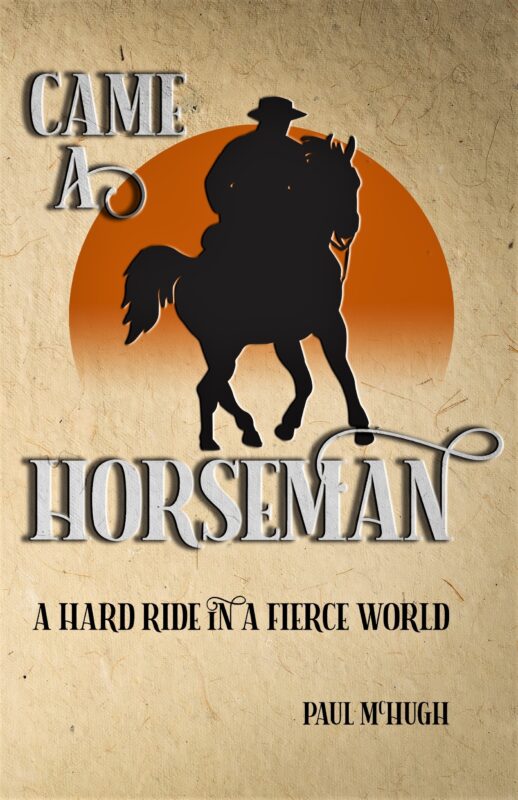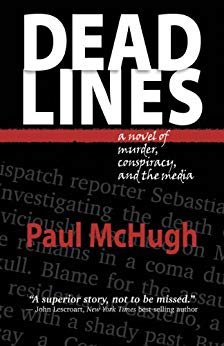California North Coast Series
By Paul McHugh, Outdoors Writer
October 11-12

Waves roll from distant Tomales Bay onto the beach at Bodega. Photo by John Weed.
We felt warmly welcomed by many folks at each port-of-call along our voyage – by fishermen, harbormasters, rangers, innkeepers, plus local folk of all descriptions in an amazing array of jobs. Staff I’d contacted at Point Reyes National Seashore proved especially kind in providing advice and permissions to ease our passage around their park.
However, one park biologist also offered a chilling warning. “You know, fall is breeding season for the elephant seals. So, great white sharks grow quite active at this time of year, around all the seal rookeries at Point Reyes.”
(For those unaccustomed to bureau-speak, I’ll offer a translation: “Active” equals “Bitey.”)
“So, you advise us not to paddle there?” I asked.
She hesitated. “I do not recommend it,” she said.
A Hint of the Presence of Sharks

Bottom half of a harbor seal – delivered courtesy of a great white shark. Photo by John Weed.
Her warning got seconded in an unusual way. John Weed is an adept and accomplished beachcomber. Among other treasures, during our voyage he’d found a perfectly good Tilley hat, a nice fleece jacket, and a loose sea lion’s tooth. A minimal requirement for Weed’s art is seizing every chance to patrol a beach. On the morn before we departed from Bodega, he strolled the strand at low tide, and spotted an odd-looking lump. On closer inspection, he noted it was the tail and flippers of a harbor seal – a mammal recently sawed in half by the jaws of a great white.
A sobering view, but hopefully, not a prophetic one.
The mouth of Tomales Bay, where we planned to go next to make landfall on Point Reyes, is generally considered rather “sharky.” So are several beach areas around Point Reyes, like those below Chimney Rock. Hell, pretty much all of that area constitutes a hotspot of the infamous Red Triangle, where most of the Pacific Coast’s shark attacks occur.
Bo Barnes had rejoined us now, so our trio devised a policy of keeping the three kayaks close, and keeping our paddle strokes synchronized. With luck, that would make us appear too large and too machine-like an entity to draw much shark interest.
Ducking into a Beach

A narrow strip of sand for our tents at Duck Beach on Point Reyes. Photo by John Weed.
Since NOAA had predicted strong southwest winds for the afternoon, we set out early for the 9-mile sprint to Tomales Bay, and by 2:30 p.m. we were ensconced on the narrow band of sand at Duck Beach, on the northeast corner of the Point Reyes peninsula. It was a balmy spot, sheltered from the wind. After pitching his tent, Weed immediately fell asleep on his bag at the entrance. Meanwhile, a gently rising tide made the hulls of our kayaks start to bob at the spot where we had beached them. This gave me an excellent idea for a prank.
Barnes and I toted our boats up and placed them in front of our tents. John Weed’s boat, we carried up and placed behind his tent. Then Barnes and I laid ourselves down and pretended to take naps, too. After a bit, Weed roused himself, sat up, and looked out on the bay. He noticed us and our boats. His boat was nowhere in view. The obvious conclusion: his kayak had gotten loose, and floated away on the tide. In which case he was now marooned here, with no way to complete his voyage. Frowning, he slowly rose to his feet, then rotated his head multiple times as he gazed across the bay and up and down the beach. Finally, from the corner of one eye, he spotted his kayak’s stern poking out from behind his tent.
“Aha. Did you find your boat?” I asked.
“You bastard,” he said. He smiled. “But that’s OK. I deserved it.”

A tule elk traverses brush path on a ridge at Point Reyes. Photo by Paul McHugh.
In the afternoon light that remained, Barnes hiked across the peninsula’s spine to scout out if we might shorten the next day’s route by paddling between the huge, offshore sea-stack of Bird Rock and the end of Tomales Point. His conclusion: Nope, too rough. I went by a different trail to see if I could get a photo of one of park’s tule elk. My results: Yep!
Onward through the Fog
The morning of Wednesday, October 12, dawned drenched by pearly grey light. The sun struggled to pierce a fog layer that hung low above Tomales Bay. I could only imagine how thick the fog might be on the sea-side of Point Reyes. Anticipating the need, I plugged fresh batteries into my Garmin mapping GPS.
Yet, once we got out to sea, it was even thicker than I’d been able to imagine. This fog went past pea-soup to plunge into clam-chowder territory. The enveloping quilt of grey was both spooky and mystic. Our entire world consisted of a circle holding three dim kayaks gliding about a paddle-length apart, bordered by featureless fuzz. Our sole aids to navigation were the tiny bright screen of the GPS, and the thunder of the surf that pounded onto Great Beach to our left.
While the triangular, serrated teeth of a big great white are rather memorable, truth is that the ragged fangs of rocky pinnacles have inflicted far more damage on humankind. Plenty of places along the Pacific Coast have been dubbed, “a graveyard of ships,” but Pt. Reyes really earned that moniker. From 1595 (when the Manila galleon San Augustin dragged her anchor in a November storm and wrecked in Drake’s Bay) until 1944 (when the Liberty ship Henry Bergh, overburdened with 1,300 soldiers sailing home from war in the South Pacific, smashed at full speed into a reef off the Farallons in heavy fog), more than 70 ships foundered and sank along a stretch of shore that extends from Tomales Point to Bolinas.
In the latter emergency, through dexterous use of lifeboats, a breeches buoy, and rescue craft sent out from San Francisco, the Henry Bergh lost not a man.
Wreck of the Sea Nymph

Paul McHugh paddles in heavy fog off the west shore of Point Reyes. Photo by John Weed.
That was a lucky episode, but my absolute favorite rescue tale at Point Reyes occurred in 1861. The clipper ship Sea Nymph, flying under full sail as she rushed toward the Golden Gate – again, a very ill-advised speed to use amid dense fog at night – had slammed right up onto Great Beach. A Canadian cowboy, Carlisle S. Abbott, newly arrived on Point Reyes to help work his brother’s dairy ranch, heard the alarm cannons and saw the flares, and rode to the sailors’ rescue. He gathered lariats from several saddles, tied one around his waist and handed the end to onlookers. Then he waded into the seething seas, and lassoed hapless mariners as they abandoned ship and struggled toward shore. In the end, only a single life was lost.
As we paddled along, keeping the thunder of Great Beach at a steady level of decibels off to our port side, we remained very aware of the risk. But unlike the Henry Bergh or the Sea Nymph, we were in no special hurry. Steady as she goes should get ‘er done for us. Barnes had one heart-stopping moment when he plunged his paddle down and it thunked into something solid – but it turned out to just be an extremely large jellyfish. Weed had another when he spotted a jutting fin – that actually belonged to a mola-mola.
Foggiest, Windiest Place on Coast

Paddlers in the mist – we find a place to land and camp at the foot of a wharf. Photo by John Weed.
By government records, Point Reyes is supposedly both the foggiest and windiest place on the whole Pacific Coast. On this day, it was able to live up to both reputations. About 1:30 p.m., wind sprang up – NOAA had predicted it would reach 25 knots – and it ripped the curtain of fog away from a rock promontory where the lighthouse stood, revealing it to our view. This light, a cone of cast iron erected in 1870 on a point a hundred yards above sea level, is an exact duplicate of the old Cape Mendocino light (now moved and put on display at Shelter Cove).
As exposed ocean capes are wont to do, Point Reyes stirred up a brew of clashing waves and swirling winds. We rode this tilt-a-whirl around the point itself, then bent our course eastward and surfed the oceanic pulse east toward Chimney Rock, admiring the way the fog would flow and tear over the ridges to the north, like creeping vapors from dry-ice.
Then abruptly, we were socked-in once more.
“That’s one helluva strip-tease!” I shouted to my paddling companions. “The lady’s putting it all back on!”
We rounded the horn of Chimney Rock, whereupon the wind smacked into us head-on from a fresh direction, pasting our faces with wet billows of fog. In another mile or so, by the time we made our pre-arranged campsite at a commercial pier owned by rancher George Nuñes, we were thoroughly drenched and chilled. The evening’s sole bright spots were the blue rings of fire that sputtered on our camp stoves as we brewed up dinner.







